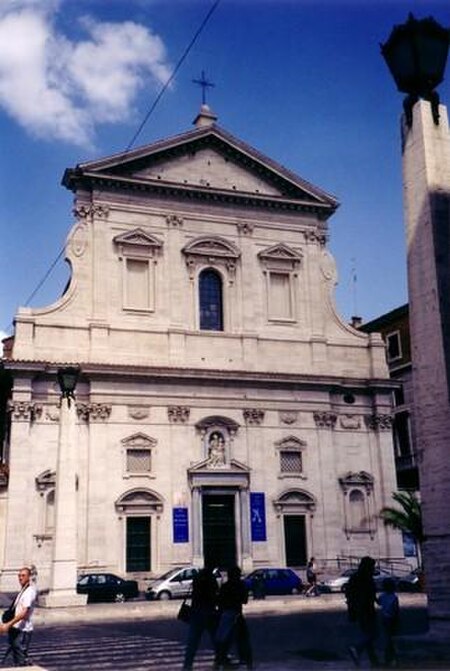Santa Maria in Traspontina

The Church of Santa Maria del Carmelo in Traspontina (Saint Mary of Carmel Across the Bridge) is a Roman Catholic titular church in Rome, run by the Carmelites. The bridge referred to is the Ponte Sant'Angelo. The church is on the Via della Conciliazione, the primary road of the Roman Rione of Borgo. Pope Sixtus V designated the church as a cardinalitial titulus on 13 April 1587. The current cardinal of Santa Maria in Traspontina is the former Archbishop of Quebec, Marc Ouellet, and is the Prefect of the Dicastery for Bishops of the Roman Curia. He was Cardinal Priest from 2003 to 2018, and continued there when co-opted to suburbicarian rank. It is the national church for Danish Catholics.
Excerpt from the Wikipedia article Santa Maria in Traspontina (License: CC BY-SA 3.0, Authors, Images).Santa Maria in Traspontina
Vicolo del Campanile, Rome Municipio Roma I
Geographical coordinates (GPS) Address External links Nearby Places Show on map
Geographical coordinates (GPS)
| Latitude | Longitude |
|---|---|
| N 41.902777777778 ° | E 12.462222222222 ° |
Address
Chiesa di Santa Maria in Transpontina (Chiesa di Santa Maria in Transpontina)
Vicolo del Campanile
00193 Rome, Municipio Roma I
Lazio, Italy
Open on Google Maps











